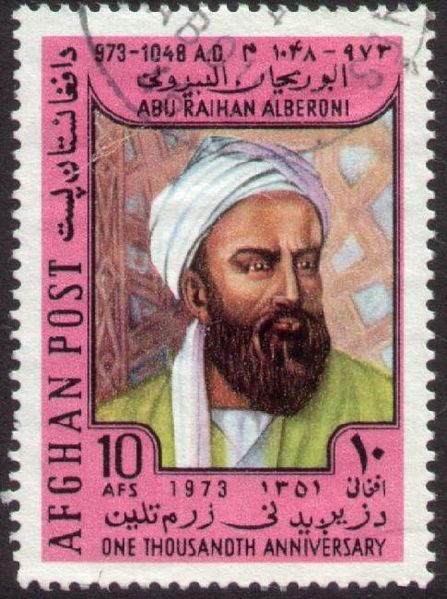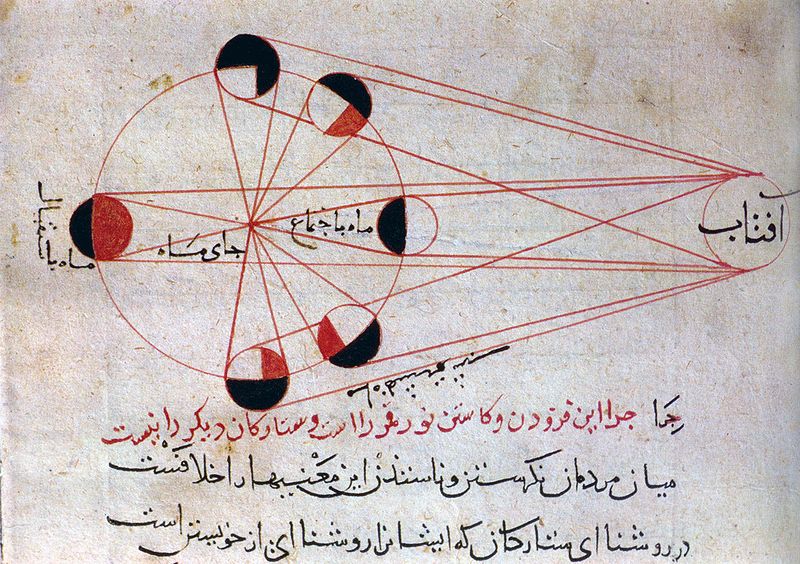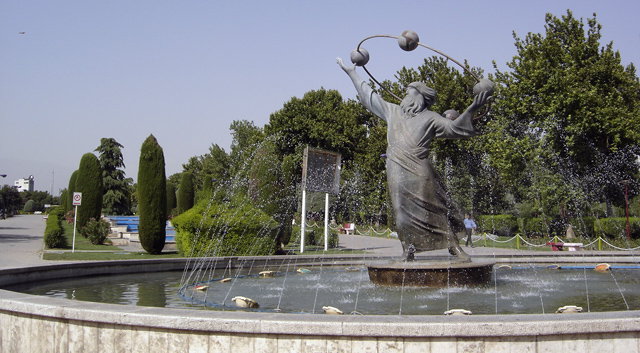<Back to Index>
- Scholar and Polymath Abū al-Rayḥān Muḥammad ibn Aḥmad al-Bīrūnī, 973
- Writer Aleksey Konstantinovich Tolstoy, 1817
- Prime Minister of Italy Mario Scelba, 1901
PAGE SPONSOR
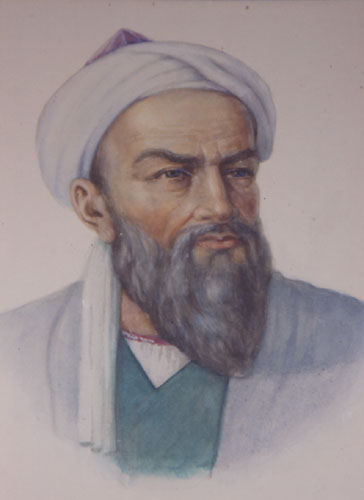
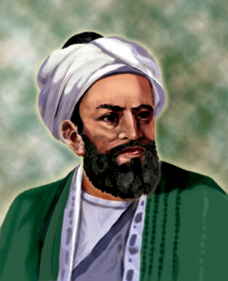
Abū al-Rayḥān Muḥammad ibn Aḥmad al-Bīrūnī (born 5 September 973 in Kath, Khwarezm, died 13 December 1048 in Ghazni), known as Alberonius in Latin and Al - Biruni in English, was an ethnic Iranian - Chorasmian Muslim scholar and polymath of the 11th century.
He is considered as one of the greatest scholars of the medieval Islamic era and was well versed in mathematics, astronomy, physical and natural sciences, and also distinguished himself as a geographer, historian, chronologist and linguist. He is also considered as impartial writer on custom and creeds of various nations and was given the title al-Ustdadh ("The Master"). According to Francis Robinson, Al-Biruni earned the "founder of Indology" and "first anthropologist" titles for his remarkable description of early 11th century India, although the first in-depth study of India by any Westerner was provided by the Greek ambassador Megasthenes (ca. 350 – 290 BC) in his "famous" four volume Indica. He was born in outer district of Kath the capital of the Afrighid dynasty of Chorasmia. The word Biruni means outer district in the Persian language and due to being born in the outer district of Kath, this became his nisba. His first twenty-five years were spent in Chorasmia where he studied fiqh, theology, grammar, mathematics, astronomy, medicine and other sciences. The Iranian Chorasmian language, which was the native language of Biruni, survived for several centuries after Islam until the Turkification of the region, and so must some at least of the culture and lore of ancient Khwarezm, for it is hard to see the commanding figure of Biruni, a repository of so much knowledge, appearing in a cultural vacuum. He was sympathetic to the Afrighids which were overthrown by the rival dynasty of Ma'munids in 995. Leaving his homeland, he left for Bukhara then under the Samanid ruler Mansur II the son of Nuh. There he also corresponded with Avicenna and there exists extant exchanges of views between these two scholars. In 998, he went to the court of the Ziyarid amir of Tabaristan, Shams al-Mo'ali Abol-hasan Ghaboos ibn Wushmgir.
There he wrote his first important work, al-Athar al-Baqqiya 'an
al-Qorun al-Khaliyya (literally: "The remaining traces of past
centuries" and translated as "Chronology of ancient nations" or
"'Vestiges of the Past") on historical and scientific chronology
probably around 1000 A.D., though he later made some amendations to the
book. Accepting the definitie demise of the Afrighids at the hands of the Ma'munids, he made peace with the Ma'munids who then ruled Chorasmia. Their court at Gorganj (also in Chorasmia) was gaining fame for its gathering of brilliant scientists. In
1017, Mahmud of Ghazni took Rey. Most scholars, including al-Biruni
were taken to Ghazna, the capital of the Ghaznavid dynasty. Biruni was made court astrologer and
accompanied Mahmud on his invasions into India, living there for a few
years. Biruni became acquainted with all things related to India. He may
even have learned some Sanskrit. During this time he wrote the Kitab ta'rikh al-Hind, finishing it around 1030. Most of the works of Al-Biruni are in Arabic although he wrote one of his masterpieces, the Kitab al-Tafhim apparently in both Persian and Arabic, showing his mastery over both languages. Bīrūnī’s
catalogue of his own literary production up to his 65th lunar / 63rd
solar year (the end of 427 / 1036) lists 103 titles divided into 12
categories: astronomy, mathematical geography, mathematics, astrological
aspects and transits, astronomical instruments, chronology, comets, an
untitled category, astrology, anecdotes, religion, and books of which
he no longer possesses copies.
Ninety - five
of 146 books known to have been written by Bīrūnī, about 65 percent,
were devoted to astronomy, mathematics, and related subjects like mathematical geography. Bīrūnī
devised his own method of determining the radius of the earth by
means of the observation of the height of a mountain and carried it out
at Nandana in India. Due
to an apparatus he constructed himself, he succeeded in determining the
specific gravity of a certain number of metals and minerals with
remarkable precision.
Biruni's
main essay on political history, Ketāb al-mosāmara fī aḵbār Ḵᵛārazm
(Book of conversation concerning the affairs of Ḵᵛārazm) is now known
only from quotations in Bayhaqī’s Tārīḵ-e masʿūdī. In addition to this,
various discussions of historical events and methodology are found in
connection with the lists of kings in his al-Āṯār al-bāqīa and in the
Qānūn as well as elsewhere in the Āṯār, in India, and scattered
throughout his other works.
Bīrūnī is one of the most important Muslim authorities on the history of religion.
Bīrūnī’s fame as an Indologist rests primarily on two texts.
